
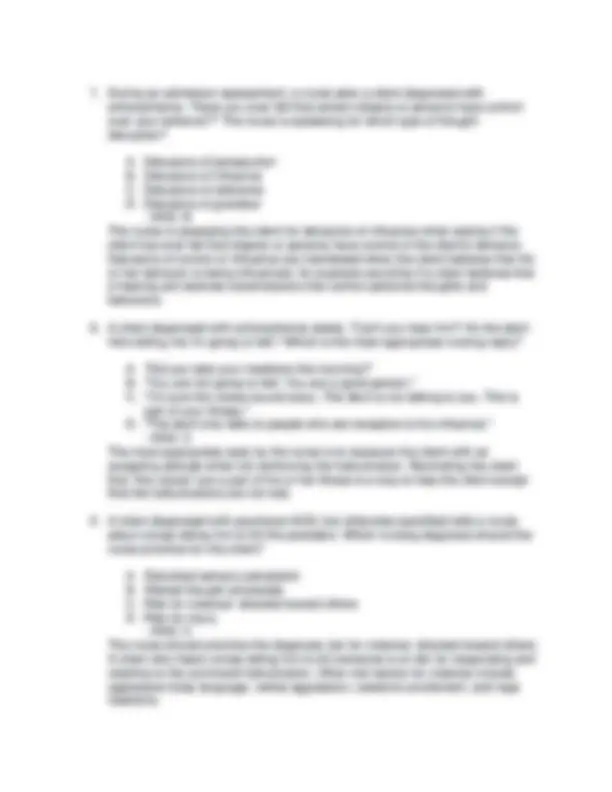
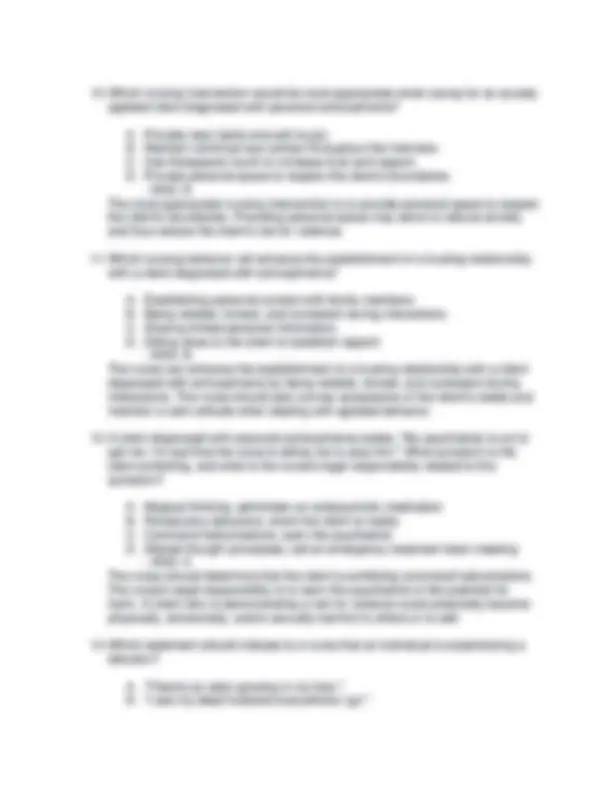
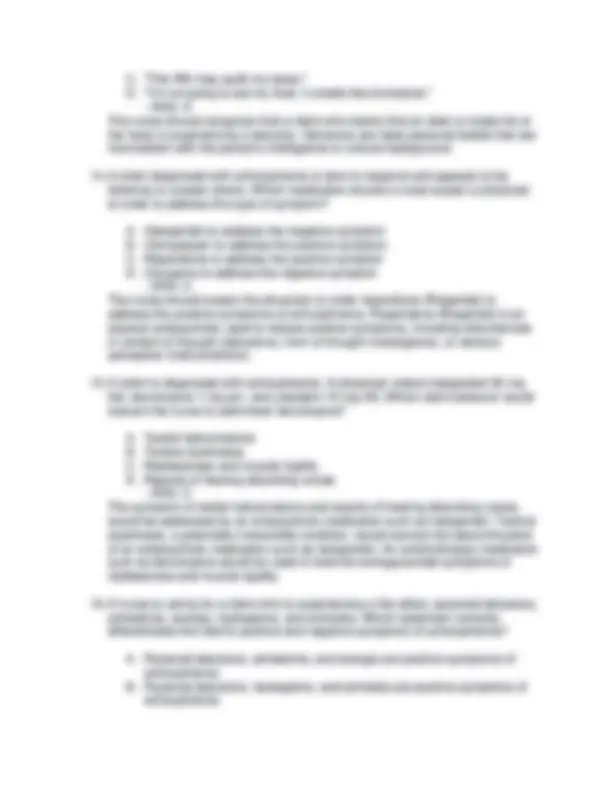
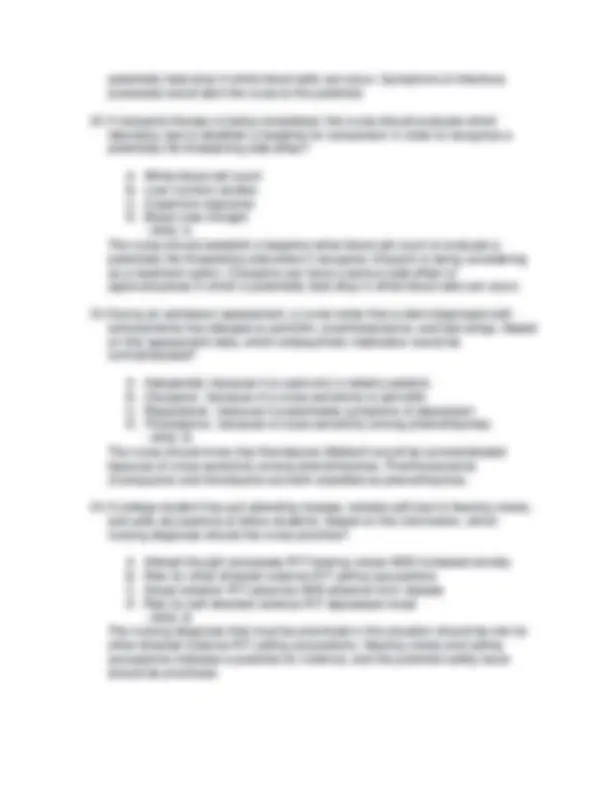
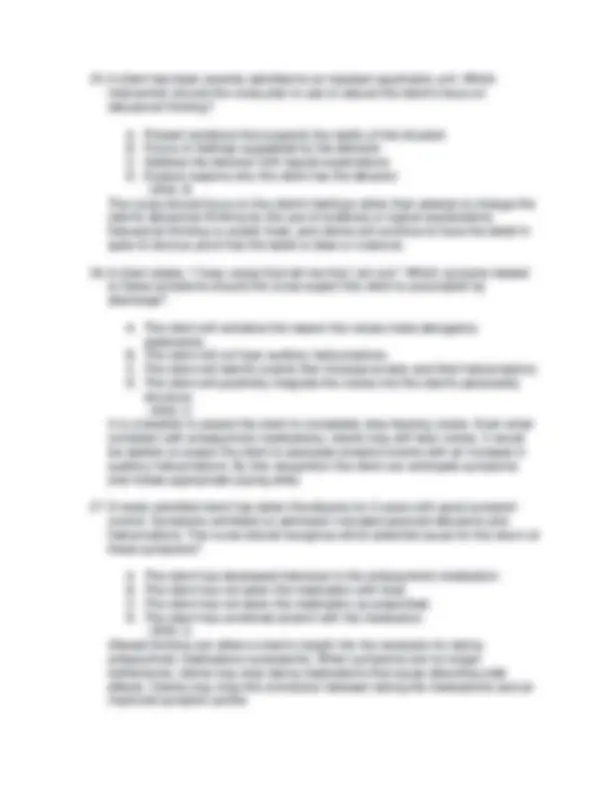
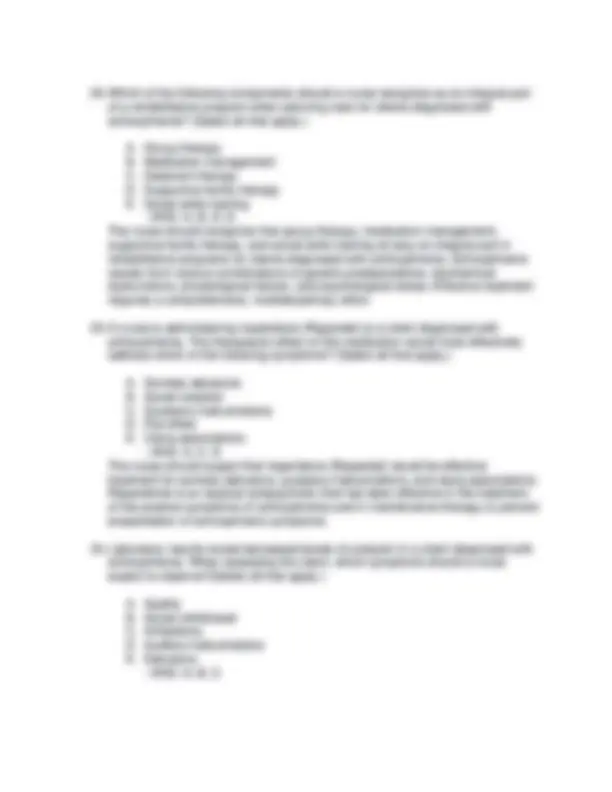
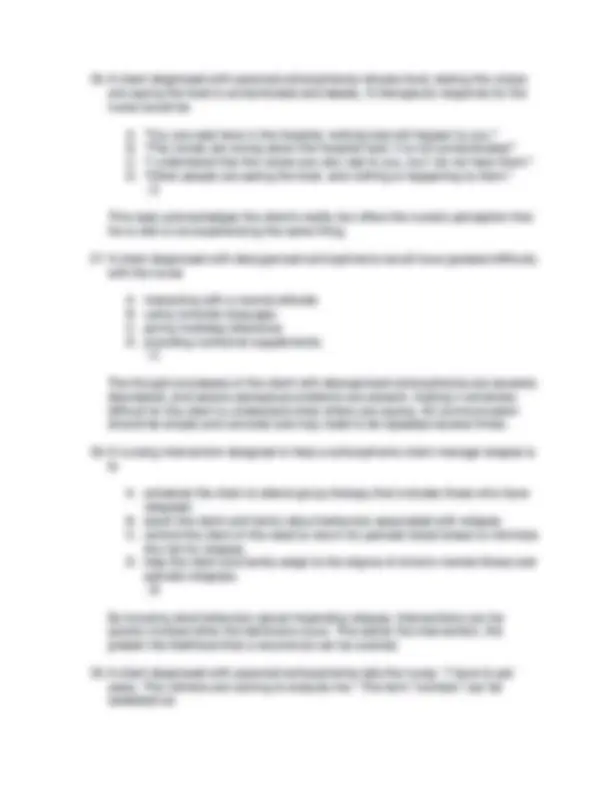
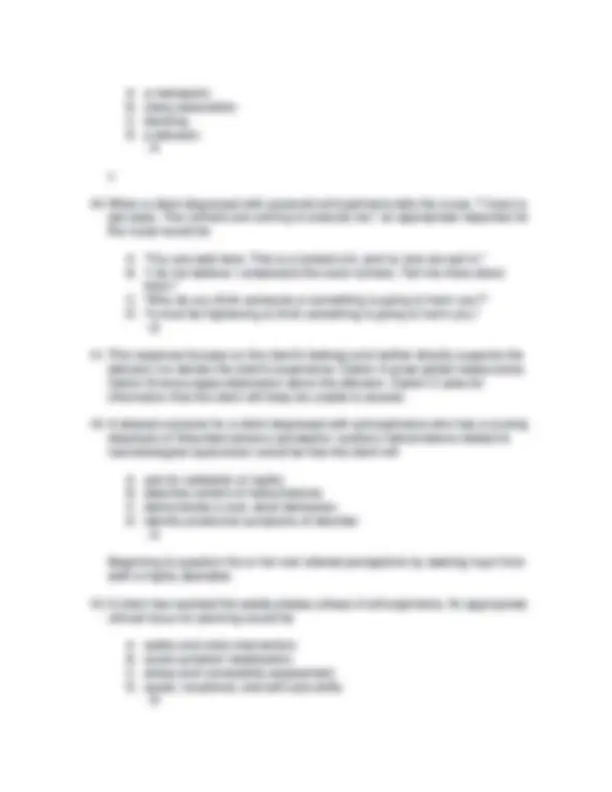
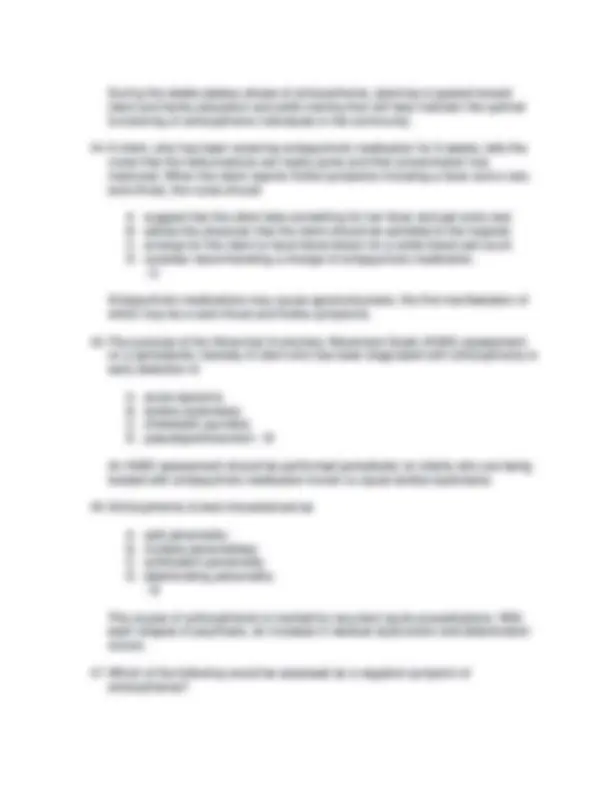
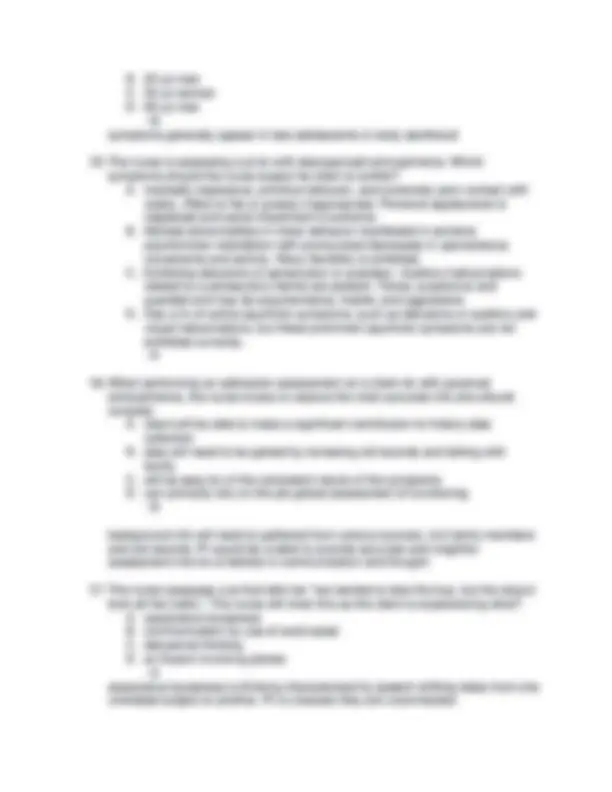
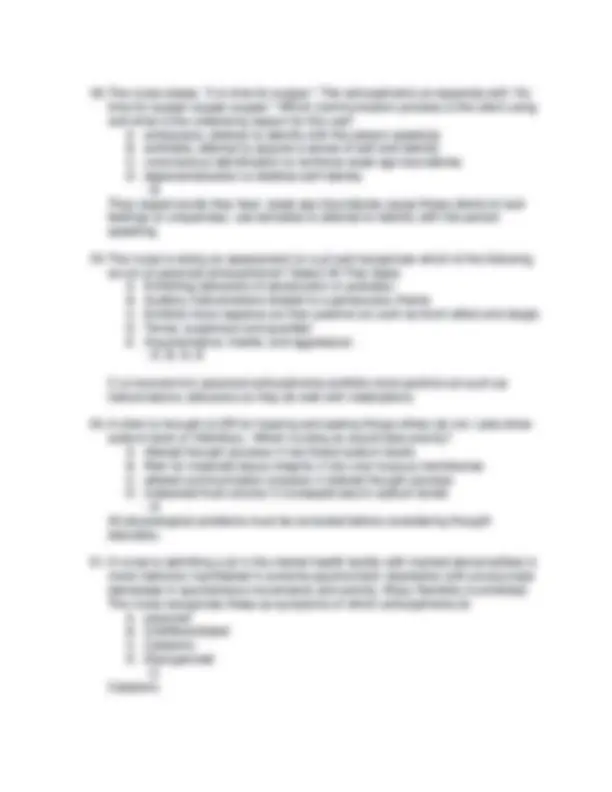
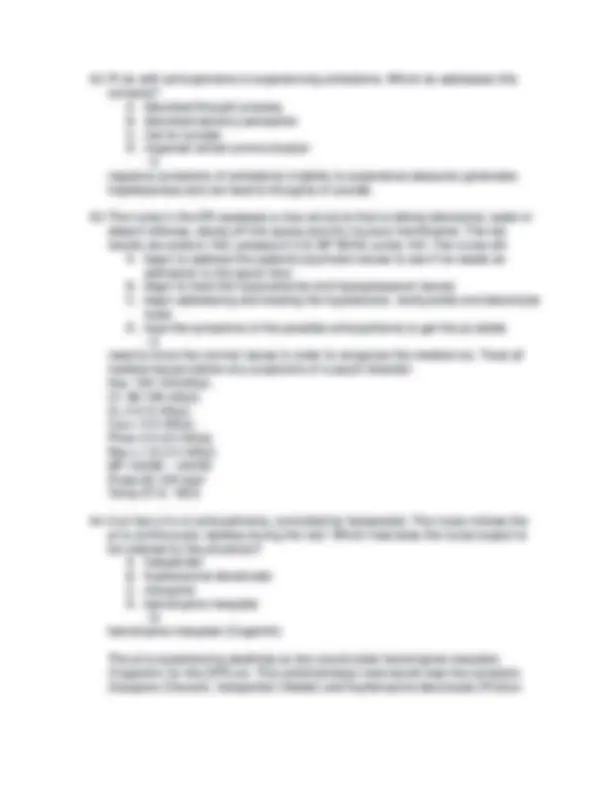
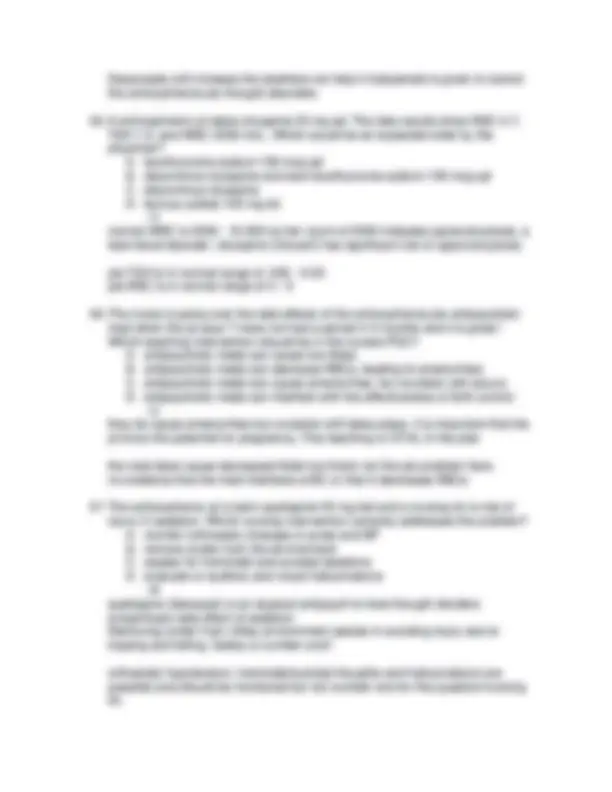
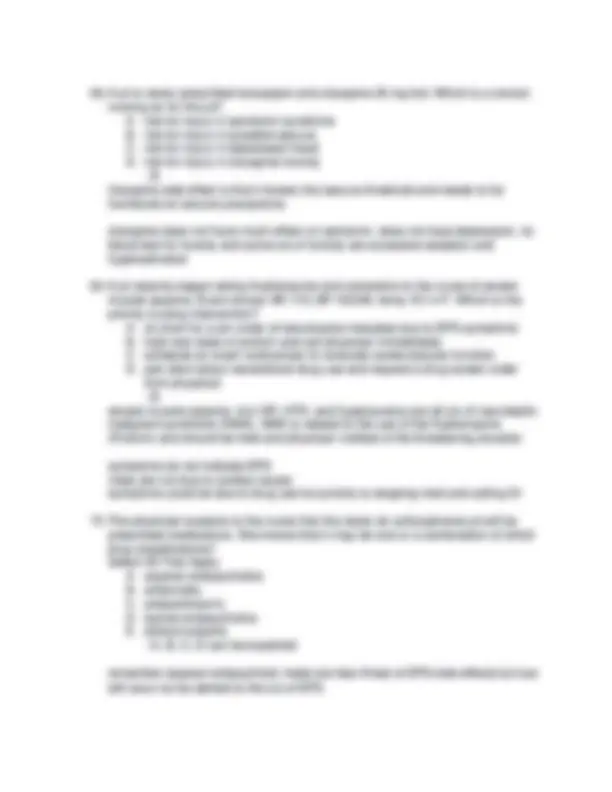


Study with the several resources on Docsity

Earn points by helping other students or get them with a premium plan


Prepare for your exams
Study with the several resources on Docsity

Earn points to download
Earn points by helping other students or get them with a premium plan
Community
Ask the community for help and clear up your study doubts
Discover the best universities in your country according to Docsity users
Free resources
Download our free guides on studying techniques, anxiety management strategies, and thesis advice from Docsity tutors
This resource provides a series of multiple-choice questions and answers covering various aspects of schizophrenia, including symptoms, diagnosis, treatment, and nursing interventions. It is designed to help nursing students deepen their understanding of the disorder.
Typology: Exams
1 / 22

This page cannot be seen from the preview
Don't miss anything!















C. "The IRS may audit my taxes." D. "I'm not going to eat my food. It smells like brimstone."
of typical antipsychotics is largely being replaced by atypical antipsychotics due to fewer side effects and lower risks.
potentially fatal drop in white blood cells can occur. Symptoms of infectious processes would alert the nurse to this potential.
The nurse should expect that a client with decreased levels of prolactin would experience apathy, social withdrawal, and anhedonia. Decreased levels of prolactin can cause depression which would result in the above symptoms.
A. a neologism. B. clang association. C. blocking. D. a delusion.
A. Anhedonia B. Hostility C. Agitation D. Hallucinations
(e.g., viral infection, birth injuries, nutritional factors) that can affect the genes governing the brain or directly injure the brain.